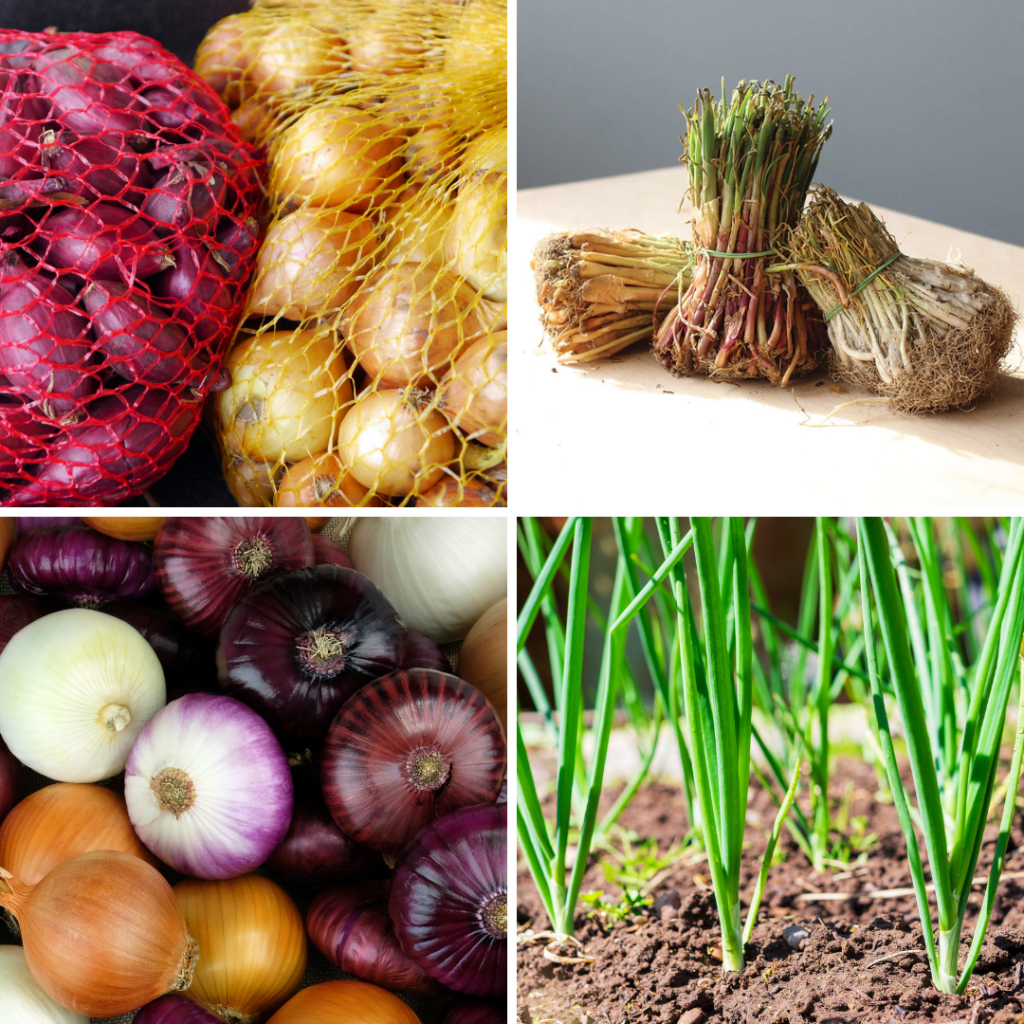White, yellow, red, green, candy and more — All about Onions

Onions — as strong as the flavor and smell can be is the opinion people have about them. I am not suggesting anyone try to eat an onion like an apple (although I have witnessed a few people do this with the Vidalia onions), but onions bring so many dishes to life.
And growing onions in your garden is not only easy, but can provide you with a palette of flavors from mildly spicy, to sweet, to hot.
Onions for planting come in three forms — seed, sets and starts. Onion seeds need to be started indoors very early in our area, in mid-January. Sets are immature, nickel-sized, young, dried onions that had been planted as seeds the previous year.
One of my favorite things about onions botanically, is that onion sets turn out as different forms (green onion or scallion vs full-size table onion) depending on how deep and how far spaced apart you plant them.
Onion starts also referred to as onion transplants are onions grown from seed under controlled settings (greenhouse) and are sold in bunches (usually 50) to transplant into the garden.
Onions are extremely easy to grow. But as with most plants, they benefit from well drained, highly fertile soil and a sunny spot. Onions can be planted early, as they can tolerate light frosts. Cool temperatures aid in the bulb development.
Onion varieties come in two types — long-day and short-day. In our area in the northern part of the state, opt for long-day onions. You can try the short-day and may have a successful crop with short-day if you can set them out extremely early. It is a gamble though because if it is too early, it can cause a stalk (trying to make a flower) instead of sending the energy to bulb formation.
Onion sets are the easiest ways to start onions. Since mid-February I have seen those net bags of onion sets in many stores, usually in the garden section with the other springtime bulbs. The main varieties of sets you will find are — yellow, white and red.
The varieties are often not listed, but if you buy sets or plants from a catalog, you do get known varieties that have defined specific characteristics.
Always examine the bags of sets with your hands and nose. If you note any wet or sour smell, or feel any squishy bulbs, take a pass. I like to get my sets at local garden centers, where you use a big scoop from a bushel of sets. I find that they are higher quality.
Now is the time where you decide to do you want to grow “regular,” or as I call them table onions — onions grown to full term where they are large and round and suitable for storage. Or do you want to grow green onions, also known as scallions or cebollitas.
Green onions are harvested at an immature stage when the culinary interest is in the thin 6-inch long green leaves. Green onions are milder and sweeter in flavor and are usually used fresh.
I always plant some of both. Now here is that interesting part botanically: Both start from sets. For green onions, choose your largest sets; use the smaller sets for table onions.
Onion sets for green onions should be planted one and a half inch (1.5) inches deep and so close that they touch each other. Onion sets for regular large onions should be planted no more than one-inch deep, but should be spaced 3 inches apart.
The great thing about planting either way is they are space saving by nature. They only grow vertically, not horizontally. If you read the label on onion seeds, sets, or plants, it will tell you how far to space the rows apart.
Remember, spacing of rows on labels assumes that you plan to run a cultivator (hoe, weeder, etc.) down the rows to weed. But in the home garden, space is a premium, so you can plant in blocks with no concern of row spacing. You can plant for regular onions in a block with 2- to 4-inch spacing between them.
If you are using onion starts (the little live transplants), plant them 4 to 5 inches apart and 1 to 1.5 inches deep. If you want to have some green onions from your onion starts, you can plant the starts 2 to 2.5 inches apart and then harvest every other one as a green onion.
Harvesting green onions is done in four to six weeks, but can be done anytime the leaves are 6 inches long. The earlier you harvest green onions, the sweeter they are left in the garden longer; they get hotter in flavor.
For the mature onions, they are usually ready for harvest in late July or August. And again, another botanically interesting point, they kind of tell you when they are ready. The tops start to fall over naturally.
Some gardeners use the practice of breaking over the tops when they think the onions are ready, but this only interrupts natural growth, and you will end up with smaller onions that do not store well. Mature onions also tend to rise up their shoulders above the soil line, which is normal. If you have any onion plants that start to flower, pull them immediately and use them, as they will not store well.
If it is sunny when you harvest, the new onions can get sunburned, so move them to a shaded location with good air circulation for them for the curing process. The curing process takes two to three weeks.
After they are sufficiently dry, cut the tops 1 inch above the onion and store in a cool, dry, dark location.
